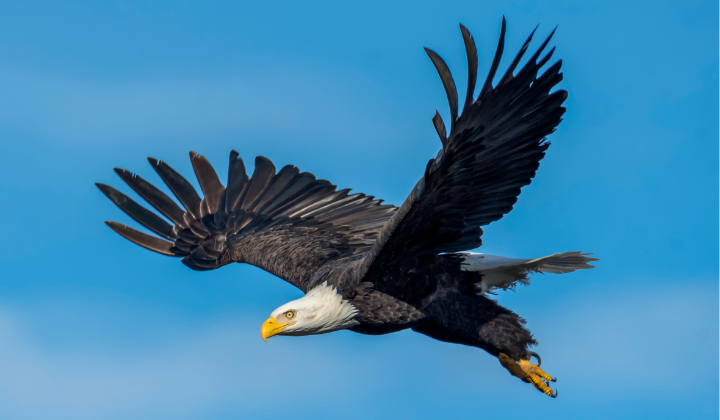
– Manuscript –
Wildlife experts in the United States are struggling with a problem: As some kinds of threatened animals increase in number, they put pressure on other at-risk creatures.
Experts say these kinds of situations involve tradeoffs. But they do not necessarily show problems with special protection programs or the U.S. Endangered Species Act.
These tradeoffs show the importance of protecting what some scientists call biological communities, rather than individual species.
Winners and losers
The famous bald eagle’s comeback has pressured rare water birds. Peregrine falcons are also making a comeback. But they threaten the birds called the California least tern and Western snowy plover. And, off the California coast, attacks from protected white sharks are hurting the recovery of threatened sea otters.
Stuart Pimm is with Duke University in North Carolina. He is an extinction specialist.
“Clearly there are occasions when we get these conflicts between species that we’re trying to protect,” Pimm said. “But is it a major worry in conservation? No,” he added.
Conservation means the protection of animals, plants, and natural resources.
Bruce Stein is a scientist with the National Wildlife Federation.
Stein suggested that animal recoveries can produce tradeoffs. That is because some animals are more adaptable than others to changes in the climate or land.
Stein said, “A lot of ecosystems where these things are occurring are a little out of whack to begin with because we’ve altered them in some way.” He added, “With climate change, there are going to be winners and losers. The losers will tend to have specific habitat requirements, narrow ecological niches, and often will be the ones already declining.”
Nature at work
Recovery of America’s national bird, the bald eagle, is a success. But in one area of Maine, the large bird creates a problem for the only U.S. breeding population of another kind of bird: great cormorants.
“When they’re disturbed by eagles, the adult cormorants will…leave their nests,” said Don Lyons, a scientist at the National Audubon Society’s Seabird Institute.
Then gulls, crows, and other birds fly in to eat cormorant eggs and young. “If this happens repeatedly, an entire colony can fail,” Lyons said.
Lyons’ team organizes volunteers to camp near cormorant gatherings to keep away eagles.
But conflicts between recovering species and ones still in trouble do not always mean something is wrong, scientists say. Such conflicts could be a return to how things were before humans got involved.
John Fitzpatrick of Cornell University’s Laboratory of Ornithology said, “When a population gets back to where it’s having the same interactions with other organisms as before it went down, that’s nature at work.”
Lyons of the Audubon Society said the bald eagle is “challenging our…notions about what’s normal” for prey such as great cormorants in New England. Cormorants might have been less numerous before eagles declined, he said.
Lyons noted that the eagle’s recovery “complicates the conservation of certain other species.” But he added that “their recovery is…a welcome complication.”
Relationships between different animals are complex, said Stein of the National Wildlife Federation. He said it is often wiser to place effort on protecting and reconnecting habitats to support natural movements.
Words in This Story
tradeoff – n. : a situation in which you must choose between or balance two things that are opposite or cannot be had at the same time — often + between
species –n. (pl.) a group of animals or plants that are similar and can produce young animals or plants
extinction – n. : the state or situation that results when something (such as a plant or animal species) has died out completely
adaptable – adj. able to change or be changed in order to fit or work better in some situation or for some purpose : able to adapt or be adapted
alter – v. to change (something)
habitat – n. the place or type of place where a plant or animal naturally or normally lives or grows
disturb –v. to prevent someone or something from doing what it normally does
interaction – n. the act of coming together and having an effect on each other — often + with
notion – n. an idea or opinion
complicate – v. to make (something) more difficult or less simple
*This article has been edited and reprinted from VOA Learning English with permission from Voice of America (VOA) for use in English language materials.
